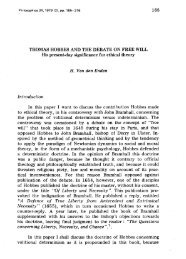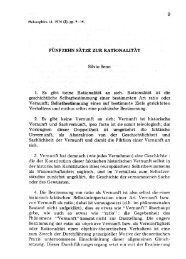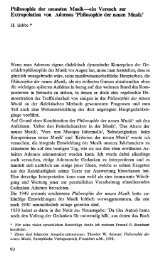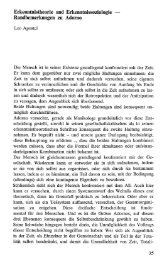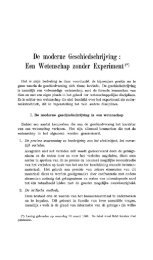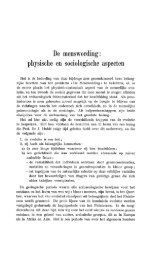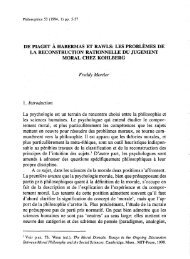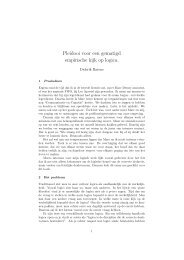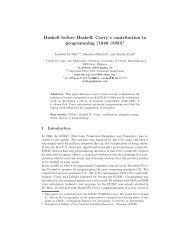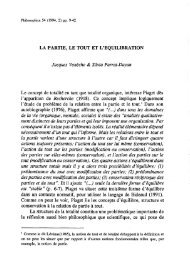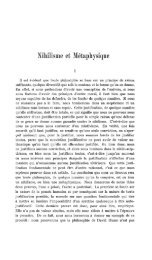CHEZ FERMAT A.D. 1637' Erkka Maula and Eero Kasanen Abstract ...
CHEZ FERMAT A.D. 1637' Erkka Maula and Eero Kasanen Abstract ...
CHEZ FERMAT A.D. 1637' Erkka Maula and Eero Kasanen Abstract ...
Create successful ePaper yourself
Turn your PDF publications into a flip-book with our unique Google optimized e-Paper software.
158 ERKKA MAULA & EERO KASANEN<br />
would (<strong>and</strong> should) have attacked these developments.<br />
Analysis is based on infinite sets <strong>and</strong> on the idea of comparing<br />
the number of elements in them, which presupposes the<br />
existence of actually infinite sets. But set theory, which is<br />
needed in the foundation of analysis, is as full of paradoxes as<br />
Zeno. What is the rigour gained, then?<br />
The continuum of real numbers assumes that numbers are not<br />
really separate entities. The least thing one can say is that the<br />
concept of real number rests on hazy grounds when compared ta<br />
natural number. Infinitesimals, infinitely smaU or large magnitudes<br />
have perplexed mathematicians, <strong>and</strong> rightly so, for centuries.<br />
There is every reason to believe that the present day<br />
definitions are considered satisfactary merely because of their<br />
expediency - calculus works well in practice. But that is exactly<br />
what Dedekind <strong>and</strong> Weierstrass could have said of their predecessors,<br />
like EudoxUB (assuming he was the author of Euclid's<br />
Elements, Book V, Def. 5) who relied on the concept of motion in<br />
geometry <strong>and</strong> on geometrical intuition.<br />
What is more, continuous analysis requires or implies an<br />
old-fashioned <strong>and</strong> paradoxical cosmology, where both time <strong>and</strong><br />
space are continuous <strong>and</strong> have no smallest or indivisible or even<br />
separate constituents. It is historicaUy tied to the study of<br />
heavenly bodies flowing smoothly in space. Perhaps the<br />
strongest argument for that view comes from theology. An omnipresent,<br />
omnipotent <strong>and</strong> omniscient divinity or demon guarantees<br />
the continuous rotation of the celestial bodies.<br />
Continuous analysis also produces pseudoproblems both in<br />
physics <strong>and</strong> in social sciences: problems that have nothing ta do<br />
with the subject matter, but reflect the conceptual difficulties in<br />
the methodology. Most real world entities are best described with<br />
discrete or finite concepts, <strong>and</strong> best measured with finite yardsticks<br />
(for concrete examples, see <strong>Kasanen</strong>, E. "Dilemmas with<br />
infinitesimal magnitudes", Journal of Economic Dynamics <strong>and</strong><br />
Control 1982; 4:295-301).<br />
The geometric counterpart of natural numbers is a discretepoint<br />
geometry. Indeed, supposing there is a smallest distance in<br />
space <strong>and</strong> time, we can in principle number aU points <strong>and</strong><br />
moments using natural numbers alone. There are neither philosophical<br />
nor mathematical reasons for using numbers other than<br />
natural. Thus a11 the pseudo-problems of analysis can be removed<br />
from the theoretical level. But calculus may remain, of<br />
course, as a useful method for engineers. Had not Hamel been BQ<br />
fast (1901) in solving Hilbert's fourth problem (Elem. 1.20 applies<br />
in Euclidean <strong>and</strong> elliptic geometries), it is possible that already<br />
then Fermat's discrete-point geometry could have been given



